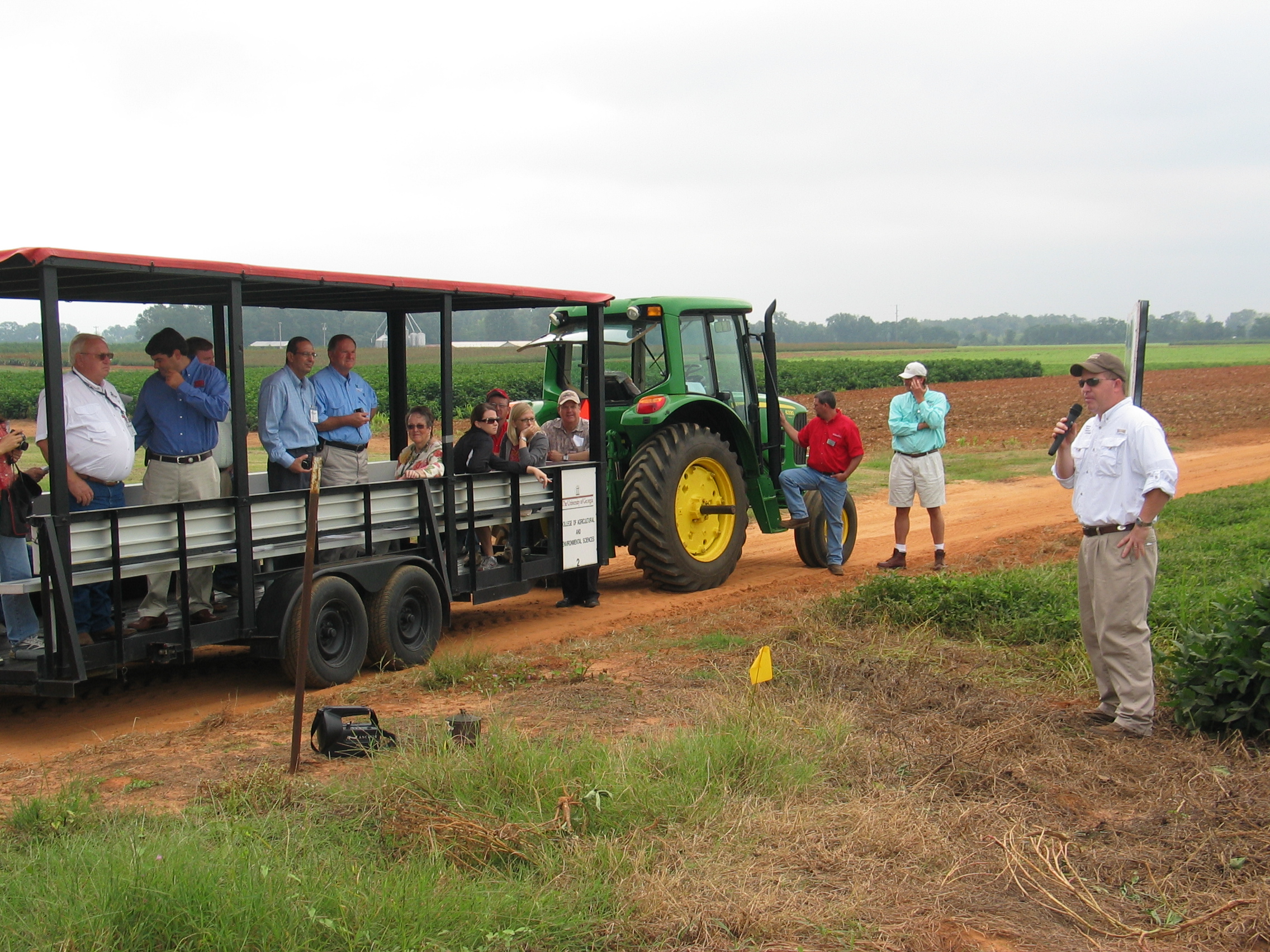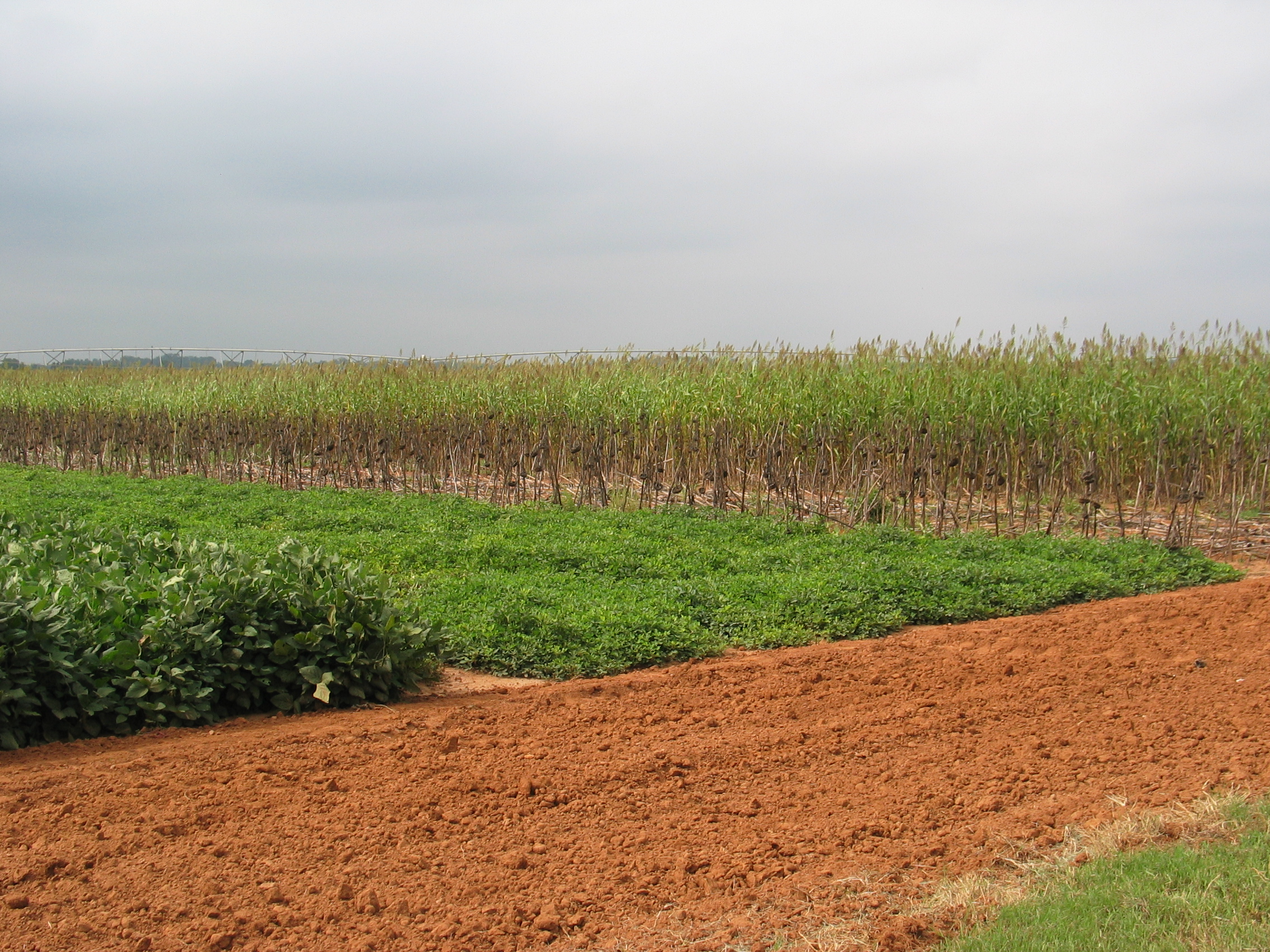 The next stop in the Plains, Ga. area highlighted peanut research through the University of Georgia and the U.S. Department of Agriculure. The group visited the Southwest Georgia Research and Education Center which was established in 1951. The center now maintains 512 acres and the U.S. Department of Agriculture has developed a foundation seed processing unit and the Department of Industry and Trade has created a welcome center for visitors to former President Jimmy Carter’s hometown. The site was selected years ago based on its heavy red clay soil which is predominant in this region of the state. This soil type can be difficult to farm but can be very productive when carefully managed.
The next stop in the Plains, Ga. area highlighted peanut research through the University of Georgia and the U.S. Department of Agriculure. The group visited the Southwest Georgia Research and Education Center which was established in 1951. The center now maintains 512 acres and the U.S. Department of Agriculture has developed a foundation seed processing unit and the Department of Industry and Trade has created a welcome center for visitors to former President Jimmy Carter’s hometown. The site was selected years ago based on its heavy red clay soil which is predominant in this region of the state. This soil type can be difficult to farm but can be very productive when carefully managed.
Current research at the center focuses on every major crop in South Georgia including peanuts, cotton, corn, soybeans, grain sorghum, wheat and canola. Researchers also study peaches and pecans. Animal scientists conduct breeding and forage studies using the station’s 75 head cow-calf herd. Researchers are conducting several research projects specific to peanuts and those include peanut variety trials at the center, herbicide tolerance in peanuts, peanut fungicide screening and economic analysis of peanuts.
 About 40 percent of the center’s budget improves the quality of life for all Georgians. It provides vital benefits for the state’s agriculture industry, but it also reaches far beyond the farm. Agricultural research helps provide safer and more nutritious foods, a cleaner environment, new industries and more comfortable homes and communities throughout the state.
About 40 percent of the center’s budget improves the quality of life for all Georgians. It provides vital benefits for the state’s agriculture industry, but it also reaches far beyond the farm. Agricultural research helps provide safer and more nutritious foods, a cleaner environment, new industries and more comfortable homes and communities throughout the state.
Stan Jones, Georgia Peanut Tour chairman, is also the superintendent of the Southwest Georgia Research and Education Center.
